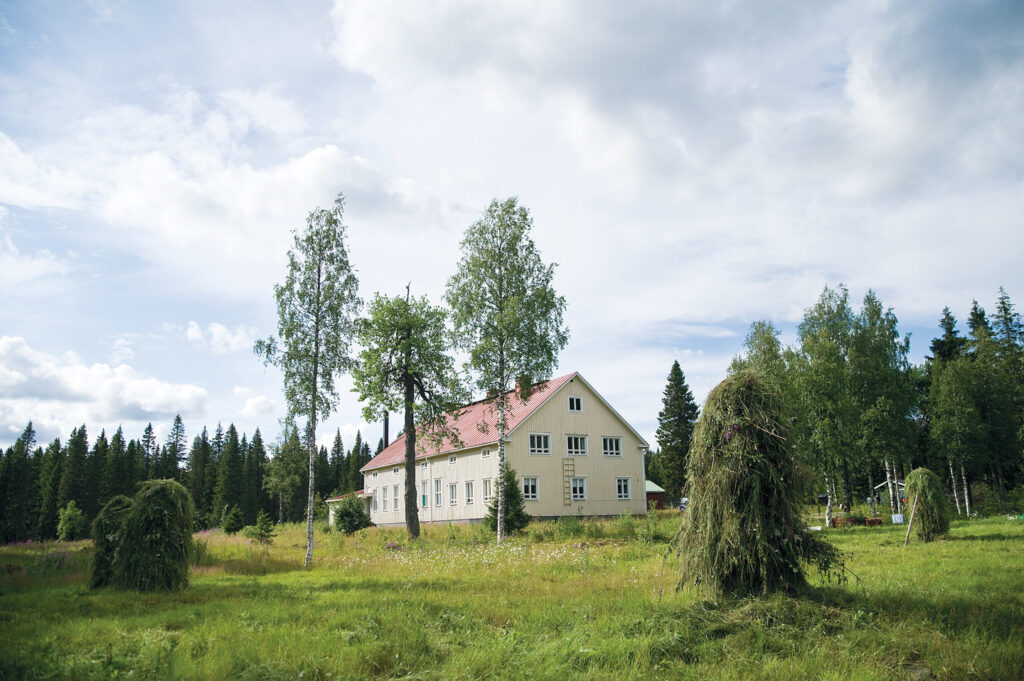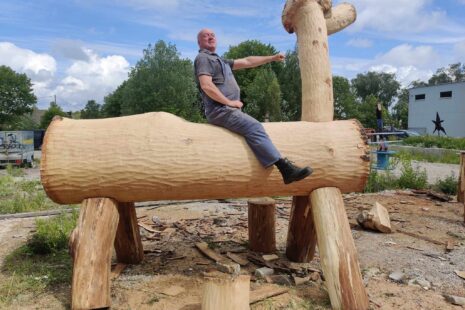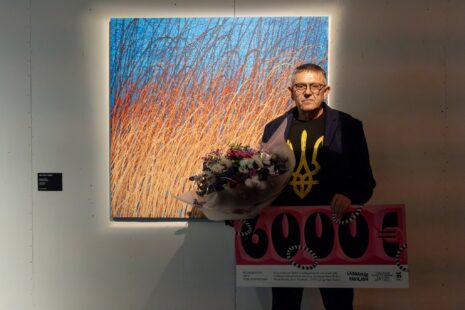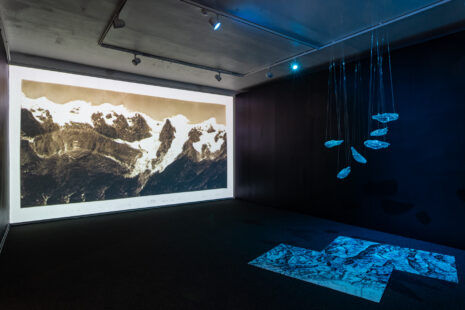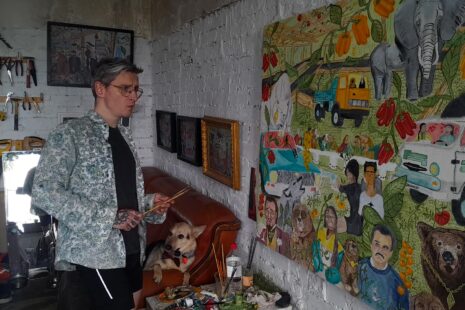The place for Mustarinda was chosen using Google Maps, to find an area where there would still be enough primeval or old-growthft. It is located in an old school building from the 50’s and maintaining it is part of cultural sustainability. Its energy system is based on wind power and solar panels, compost and geothermal heating; its own garden and extensive library are also part of the concept.
Mustarinda’s goal is to promote the ecological rebuilding of society, the diversity of culture and nature, and the connection between art and science. Residency is a key way of working for them and it is meant not only for artists, but people from different fields which they believe is needed for sustainable living. Mustarinda was founded in 2010 when no one was speaking about sustainability in art education and back then it sounded weird. It has changed a lot since then, which is good but still not enough, as Kaartinen reflects. Below she shares more of her thoughts after the meeting.
Miina, you were invited as a guest speaker to the Nordic-Baltic Network meeting to talk about ecological and artistic sustainability in the context of the Mustarinda Association. One of the main working forms of this organization is residencies. Please tell us more closely, how have residencies helped to reach your goals?
Our aim is to bring people from different fields and disciplines together. By creating a safe and comfortable community new ideas can emerge and people can learn new things. Mustarinda residency program is focused on ecological themes and the physical environment supports this: for example, our house has an energy system based on geo-thermal heating and solar panels, we use an electric car for necessary travels, and we practice domestic agriculture and foraging. All the activities are planned so that they would create as little emissions as possible. We also encourage our residents to avoid air travel when coming to Mustarinda. Unfortunately, at the moment we do not have funding to support artists’ slow travel, but are constantly working for it. In addition, our house has a good library for guests to learn more about the themes we are working with.
All and all our residency is meant to be a space for learning and transformation – often these processes are slow of course.
You are also organizing exhibitions, workshops, courses, classes for school kids, summer art camps and other kinds of events. What will you have in program this year/summer?
Our program this year focuses on communities and land. We are opening a summer exhibition in late June which is curated by Hilde Methi and Remi Vesala who are working in Mustarinda house with an artist group for the whole month. This is the beginning of a long term collaboration with Methi, who has a really interesting curatorial practice with a strong northern, situated viewpoints.
In August there will also be many public events that combine art, research and environmental education. Lichenfest is a weekend happening for the whole family and this year the theme of the festival is geology. Before the weekend we are also launching a new research-focused seminar Mustarinda Community Convention, that will hopefully after this pilot year grow into something regular. The idea is to take time to think about community-based knowledge and knowing in the ecological transition. This is actually an overarching theme during the whole summer: what kind of communities are we part of? What kind of knowledge do we need in order to change?
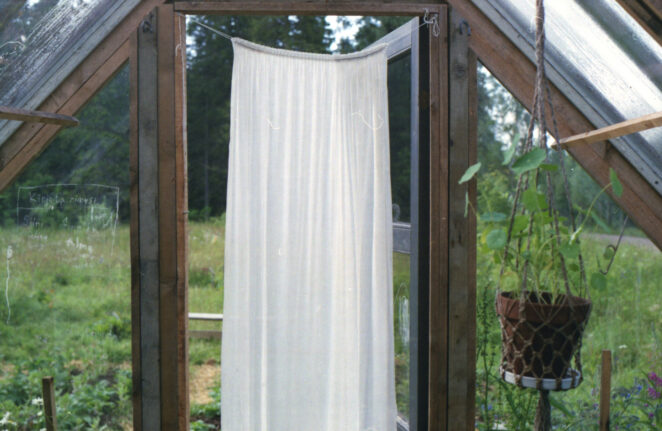
Greenhouse and garden
Considering that you are located „in the middle of nowhere“, how easy or hard is it to get the audiences to come and see the exhibitions or take part in the events?
When we are situated in a sparsely populated rural area the audiences are of course smaller than in a big city. At the same time there is not so much competition either 🙂 Jokes aside, based on experience during summer audiences are willing to go the extra mile for an interesting event. We are privileged to have a house in the middle of an amazing old-growth forest and culturally specific landscapes.
So, in addition to seeing and experiencing Mustarinda events the visitor can always experience the natural wonders too.
Mustarinda also has an extensive library to help people get educated. What are your own favourite books? Would you like to quote some of them?
Lately I’ve been so focused on my own research that I’ve read very little out-side of academic texts.
One of the quotes that I keep returning to is from Isabelle Stengers’ book Another Science is Possible (2018) and it goes like this: “…we have no other option than to trust that we can make a difference, however small, a difference that calls for other differences to be made elsewhere. What I have related is just a tale, which, as such, certainly cannot hope to make “the” difference. But it does call for other tales, for a weaving of regenerative, slightly transgressive imaginations.”
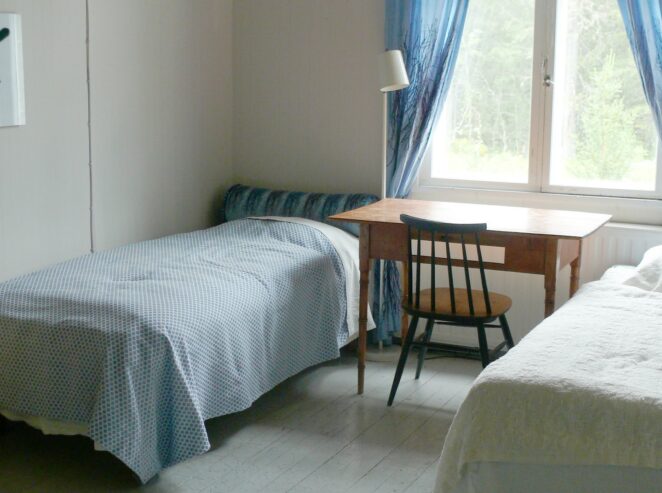
Writer’s room. Pct Michaela Casková
Mustarinda has its own publication that brings together art and science as well as includes academic writings and poems. What are the themes that the last issue covered, for example?
Yes, Mustarinda indeed has its own magazine. It comes out every other year or so. In the last magazine we focused on different forms of caring and maintaining. The 8th issue of the magazine will be published this summer and its starting point is a nature trail that goes around the Paljakka hill where Mustarinda house is. We wanted to think about what is happening in the society at the moment starting from a particular, physical place. Intellectual or political discussions very rarely start from places like Paljakanvaara, from the forest, but when looking at questions such as energy, human-nature-relationship, extractivism or commons, it is a very useful place to start. For example, the current energy transition looks very different from the hill.
During your presentation at the meeting you raised a question about „freedom of art in context on ecological issues” and pointed out that „making changes into our system is actually protecting the freedom of art.“ Could you explain that a bit more?
This was referring to the simple fact that all human activities are dependent on the environment. We all live in a society that needs to be changed, both from the technological and cultural side. Arts and culture are in the center of ecological transformation. Art is a sphere of human life where we can go to unknown places.
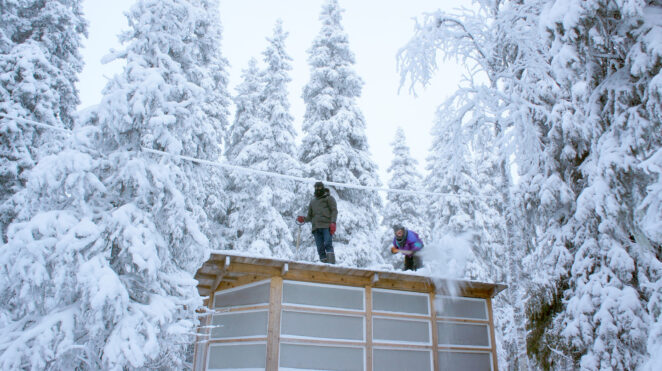
Off-grid wild hut for guests and residents, made by Sandra Nyberg. Pct Michaela Caskova

